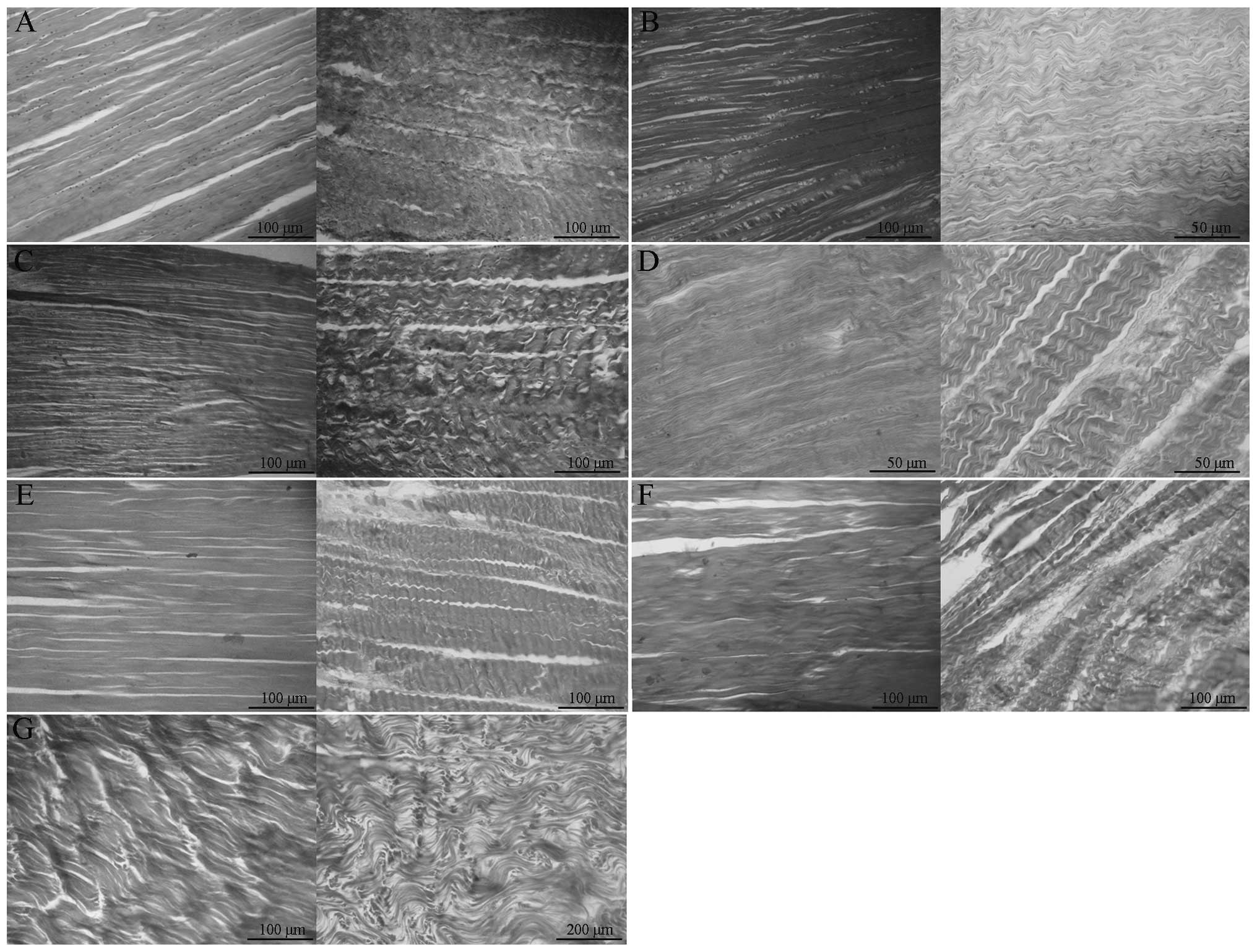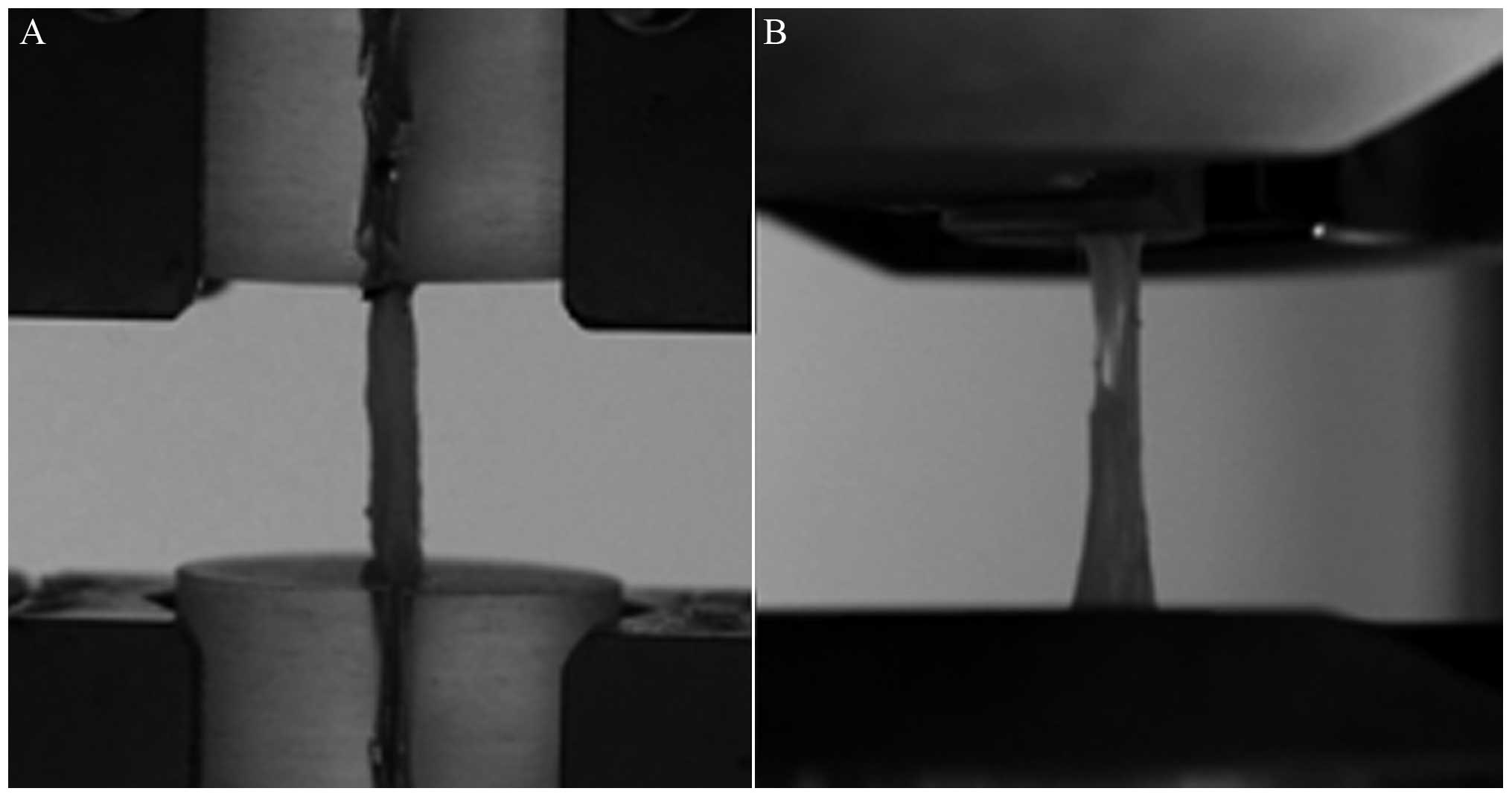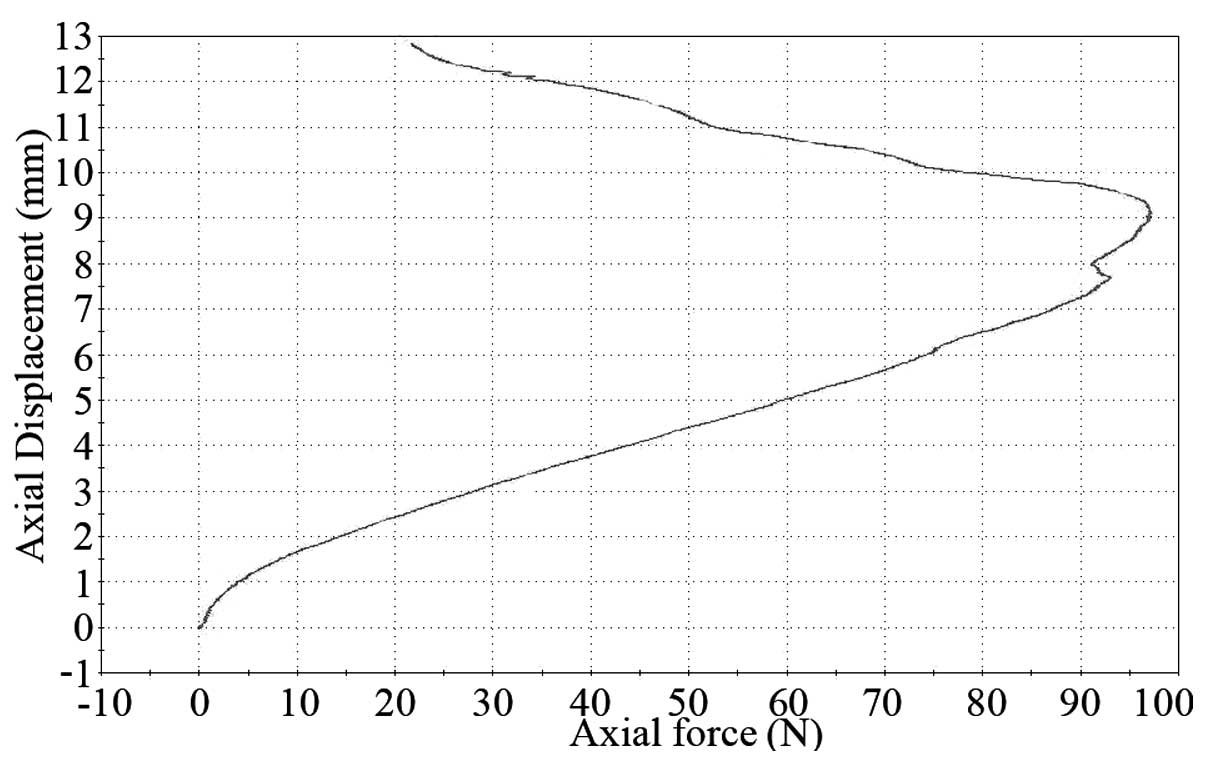|
1
|
Potter HG, Jain SK, Ma Y, et al: Cartilage
injury after acute, isolated anterior cruciate ligament tear:
immediate and longitudinal effect with clinical/MRI follow-up. Am J
Sports Med. 40:276–285. 2012. View Article : Google Scholar : PubMed/NCBI
|
|
2
|
Omae H, Sun YL, An KN, Amadio PC and Zhao
C: Engineered tendon with decellularized xenotendon slices and bone
marrow stromal cells: an in vivo animal study. J Tissue Eng Regen
Med. 6:238–244. 2012. View
Article : Google Scholar : PubMed/NCBI
|
|
3
|
Leys T, Salmon L, Waller A, Linklater J
and Pinczewski L: Clinical results and risk factors for reinjury 15
years after anterior cruciate ligament reconstruction: a
prospective study of hamstring and patellar tendon grafts. Am J
Sports Med. 40:595–605. 2012.PubMed/NCBI
|
|
4
|
Harrison RD and Gratzer PF: Effect of
extraction protocols and epidermal growth factor on the cellular
repopulation of decellularized anterior cruciate ligament
allografts. J Biomed Mater Res A. 75:841–854. 2005. View Article : Google Scholar
|
|
5
|
Wilshaw SP, Kearney JN, Fisher J and
Ingham E: Production of an acellular amniotic membrane matrix for
use in tissue engineering. Tissue Eng. 12:2117–2129. 2006.
View Article : Google Scholar : PubMed/NCBI
|
|
6
|
Kuo CK, Marturano JE and Tuan RS: Novel
strategies in tendon and ligament tissue engineering: Advanced
biomaterials and regeneration motifs. Sports Med Arthrosc Rehabil
Ther Technol. 2:202010. View Article : Google Scholar : PubMed/NCBI
|
|
7
|
Longo UG, Lamberti A, Maffulli N and
Denaro V: Tissue engineered biological augmentation for tendon
healing: a systematic review. Br Med Bull. 98:31–59. 2011.
View Article : Google Scholar : PubMed/NCBI
|
|
8
|
Chen X, Zou XH, Yin GL and Ouyang HW:
Tendon tissue engineering with mesenchymal stem cells and
biografts: an option for large tendon defects? Front Biosci (Schol
Ed). 1:23–32. 2009. View
Article : Google Scholar : PubMed/NCBI
|
|
9
|
Butler DL, Juncosa-Melvin N, Boivin GP, et
al: Functional tissue engineering for tendon repair: A
multidisciplinary strategy using mesenchymal stem cells,
bioscaffolds, and mechanical stimulation. J Orthop Res. 26:1–9.
2008. View Article : Google Scholar
|
|
10
|
Karaoglu S, Fisher BM, Woo SL, et al: Use
of a bioscaffold to improve healing of patellar tendon defect after
graft harvest for ACL reconstruction: A study in rabbits. J Orthop
Res. 26:255–263. 2008. View Article : Google Scholar : PubMed/NCBI
|
|
11
|
Worth DC, Hodivala-Dilke K, Robinson SD,
et al: Alpha v beta3 integrin spatially regulates VASP and RIAM to
control adhesion dynamics and migration. J Cell Biol. 189:369–383.
2010. View Article : Google Scholar : PubMed/NCBI
|
|
12
|
Tischer T, Vogt S, Aryee S, et al: Tissue
engineering of the anterior cruciate ligament: a new method using
acellularized tendon allografts and autologous fibroblasts. Arch
Orthop Trauma Surg. 127:735–741. 2007. View Article : Google Scholar : PubMed/NCBI
|
|
13
|
Deeken CR, White AK, Bachman SL, et al:
Method of preparing a decellularized porcine tendon using tributyl
phosphate. J Biomed Mater Res B Appl Biomater. 96:199–206. 2011.
View Article : Google Scholar : PubMed/NCBI
|
|
14
|
Lidén M, Sernert N, Rostgård-Christensen
L, Kartus C and Ejerhed L: Osteoarthritic changes after anterior
cruciate ligament reconstruction using bone-patellar tendon-bone or
hamstring tendon autografts: a retrospective, 7-year radiographic
and clinical follow-up study. Arthroscopy. 24:899–908. 2008.
|
|
15
|
Butler DL, Juncosa-Melvin N, Boivin GP, et
al: Functional tissue engineering for tendon repair: A
multidisciplinary strategy using mesenchymal stem cells,
bioscaffolds, and mechanical stimulation. J Orthop Res. 26:1–9.
2008. View Article : Google Scholar
|
|
16
|
Carey JL, Dunn WR, Dahm DL, Zeger SL and
Spindler KP: A systematic review of anterior cruciate ligament
reconstruction with autograft compared with allograft. J Bone Joint
Surg Am. 91:2242–2250. 2009. View Article : Google Scholar : PubMed/NCBI
|
|
17
|
Gilbert TW, Sellaro TL and Badylak SF:
Decellularization of tissues and organs. Biomaterials.
27:3675–3683. 2006.PubMed/NCBI
|
|
18
|
Stone KR, Abdel-Motal UM, Walgenbach AW,
Turek TJ and Galili U: Replacement of human anterior cruciate
ligaments with pig ligaments: a model for anti-non-gal antibody
response in long-term xenotransplantation. Transplantation.
83:211–219. 2007. View Article : Google Scholar : PubMed/NCBI
|
|
19
|
Tomford WW: Transmission of disease
through transplantation of musculoskeletal allografts. J Bone Joint
Surg Am. 77:1742–1754. 1995.PubMed/NCBI
|
|
20
|
Malcarney HL, Bonar F and Murrell GA:
Early inflammatory reaction after rotator cuff repair with a
porcine small intestine submucosal implant: a report of 4 cases. Am
J Sports Med. 33:907–911. 2005. View Article : Google Scholar
|
|
21
|
Elder BD, Eleswarapu SV and Athanasiou KA:
Extraction techniques for the decellularization of tissue
engineered articular cartilage constructs. Biomaterials.
30:3749–3756. 2009. View Article : Google Scholar : PubMed/NCBI
|
|
22
|
Bhrany AD, Beckstead BL, Lang TC, Farwell
DG, Giachelli CM and Ratner BD: Development of an esophagus
acellular matrix tissue scaffold. Tissue Eng. 12:319–330. 2006.
View Article : Google Scholar : PubMed/NCBI
|
|
23
|
Cartmell JS and Dunn MG: Effect of
chemical treatments on tendon cellularity and mechanical
properties. J Biomed Mater Res. 49:134–140. 2000. View Article : Google Scholar : PubMed/NCBI
|
|
24
|
Cartmell JS and Dunn MG: Development of
cell-seeded patellar tendon allografts for anterior cruciate
ligament reconstruction. Tissue Eng. 10:1065–1075. 2004. View Article : Google Scholar : PubMed/NCBI
|
|
25
|
Courtman DW, Errett BF and Wilson GJ: The
role of crosslinking in modification of the immune response
elicited against xenogenic vascular acellular matrices. J Biomed
Mater Res. 55:576–586. 2001. View Article : Google Scholar : PubMed/NCBI
|
|
26
|
Woods T and Gratzer PF: Effectiveness of
three extraction techniques in the development of a decellularized
bone-anterior cruciate ligament-bone graft. Biomaterials.
26:7339–7349. 2005. View Article : Google Scholar : PubMed/NCBI
|

















